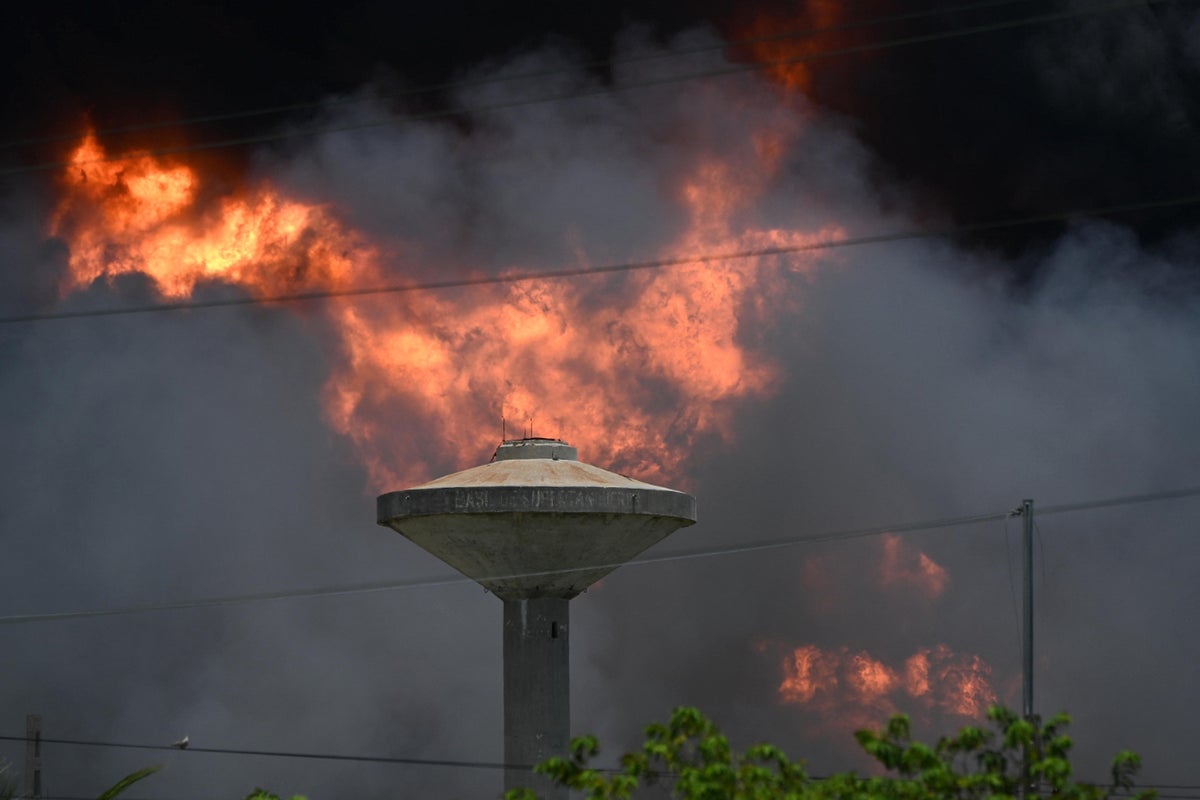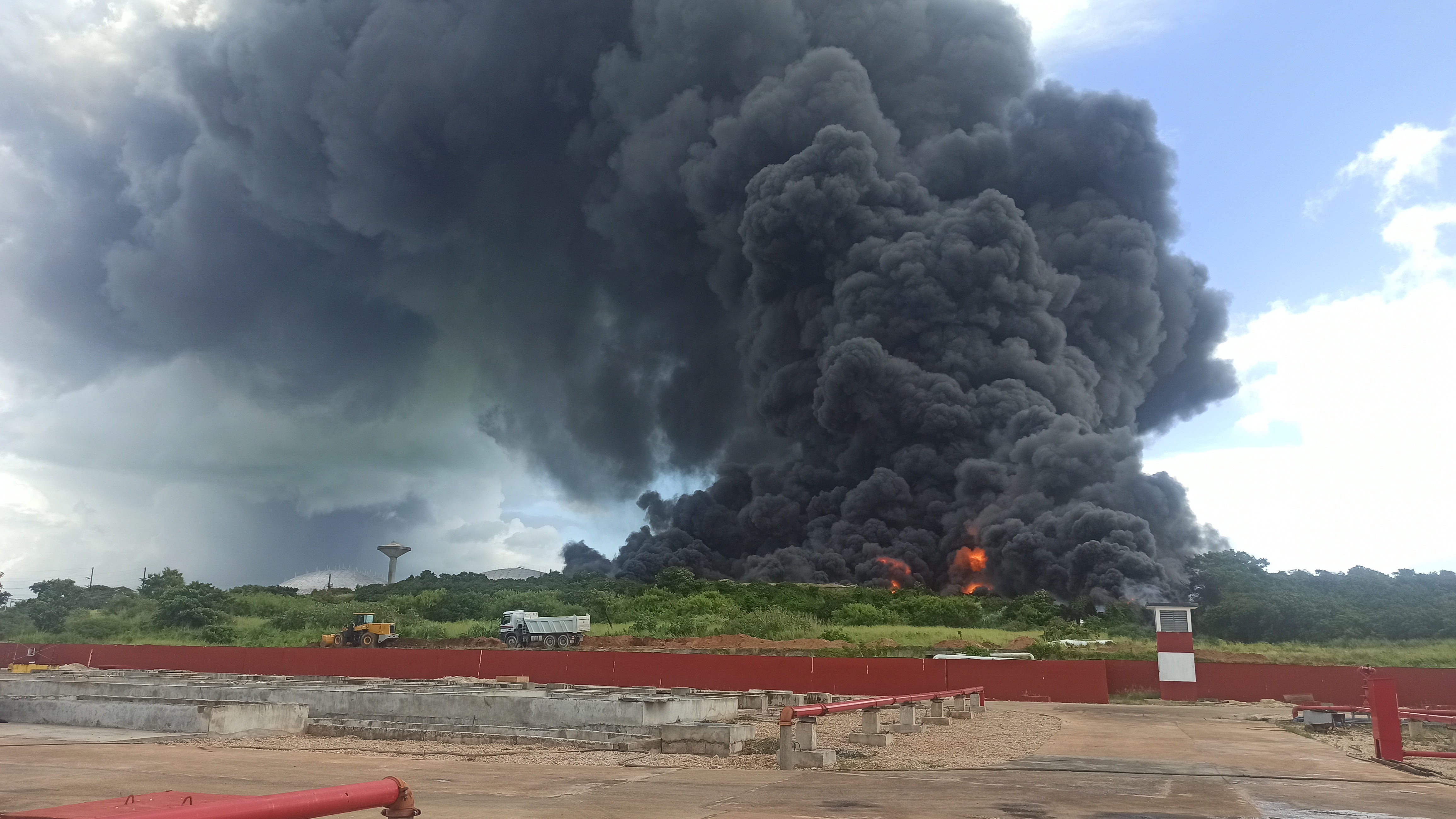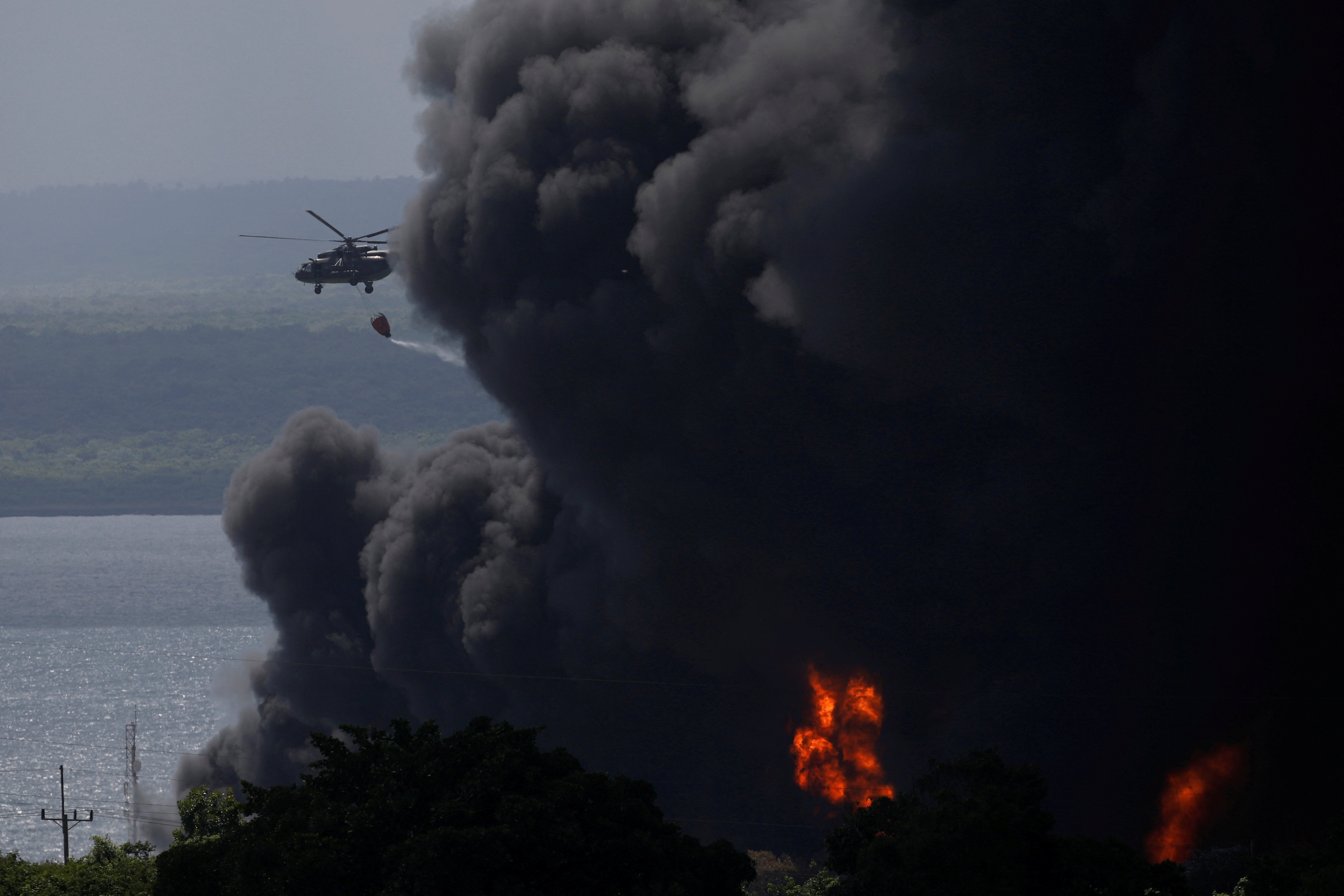
Dozens of people have been injured and 17 firefighters are missing after lightning struck fuel storage tanks at a supertanker port in Cuba, sparking explosions and ferocious fires.
The blaze broke out during a thunderstorm on Friday night in the city of Matanzas and raged uncontrollably on Saturday despite fire crews’ battling to quell it.
The official Cuban News Agency said a lightning strike set one oil tank on fire at Matanzas Supertanker Base and the blaze later spread to a second fuel storage container.
At least 67 people have been injured in four explosions and 17 firefighters remained unaccounted for, according to Cuban state-run television. Civilians had already been evacuated from the area.

Health minister Josã Angel Portal Miranda said in a Twitter post that three of those injured were in critical condition and 15 in a “grave” condition.
Seven patients were transferred to hospitals in the capital, Havana.
President Miguel Diaz-Canel visited the scene 80 miles east of Havana around midnight on Friday and returned during the morning as state-run television broadcast live coverage of the unfolding disaster.
Mr Diaz-Canel posted on Twitter before the second blast that first responders were “trying to avert the spread of the flames and any spill of fuel” into the Matanzas bay.

A later tweet from his office said Cuba was asking “friendly” nations with experience of the oil sector for help.
By Saturday morning the fire appeared completely out of control, threatening other nearby fuel storage tanks as smoke reached Havana, more than 60 miles away.
“I was in the gym when I felt the first explosion. A column of smoke and terrible fire rose through the skies,” resident Adiel Gonzalez said, adding that the city has a “strong smell of sulfur”.
A paramedic at the scene, who asked not to be identified, said by telephone that cold water was being poured on nearby tanks.
The fire comes as Cuba suffers from daily blackouts and fuel shortage, problems likely to be aggravated by the blaze.
Jorge Pinon, director of the University of Texas at Austin’s Latin America and Caribbean Energy and Environment Programme, said the area had eight big tanks each with a capacity of 300,000 barrels.
“The area is a transshipment point for fuel to various thermo-electric plants, not just the one nearby, so this could be very bad news for the power grid,” he said.







